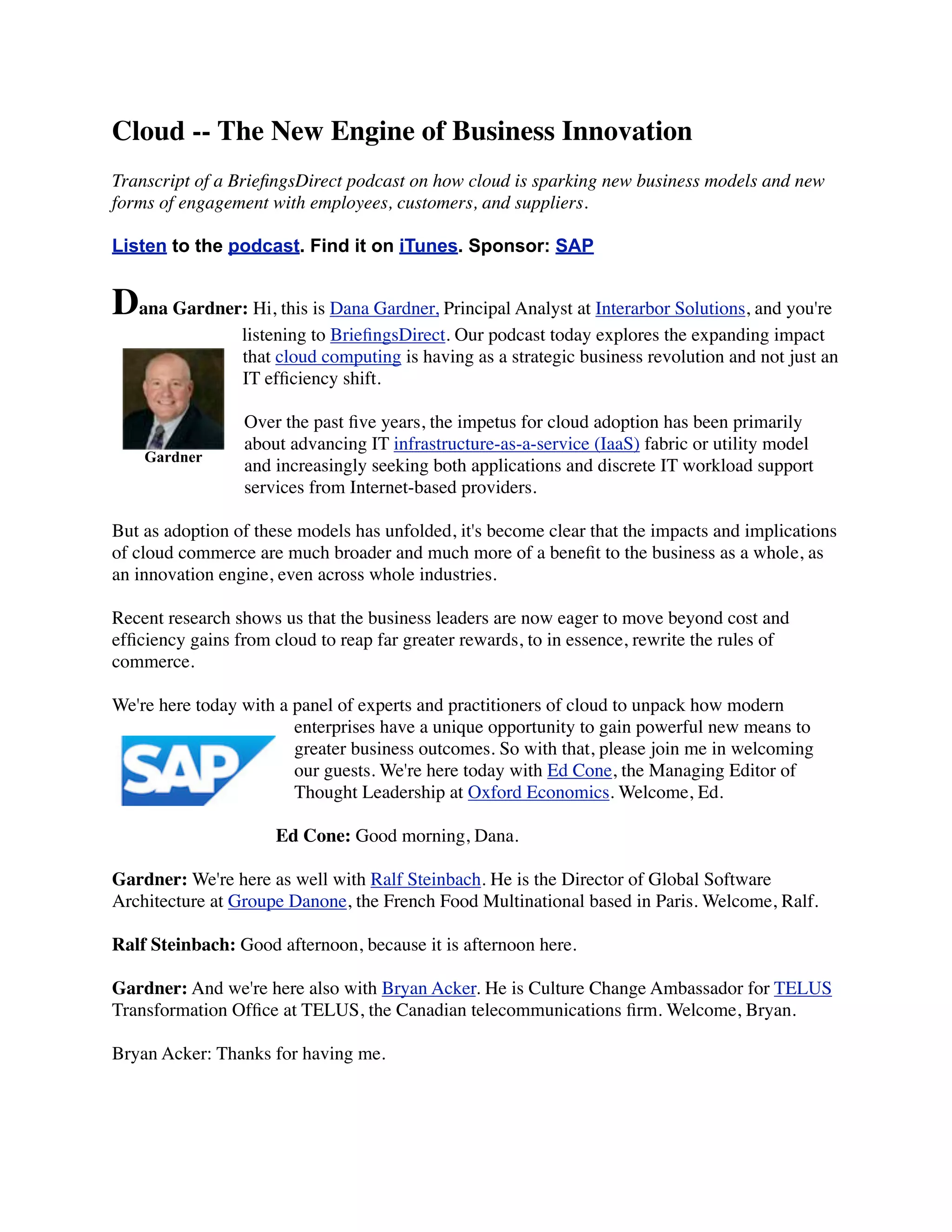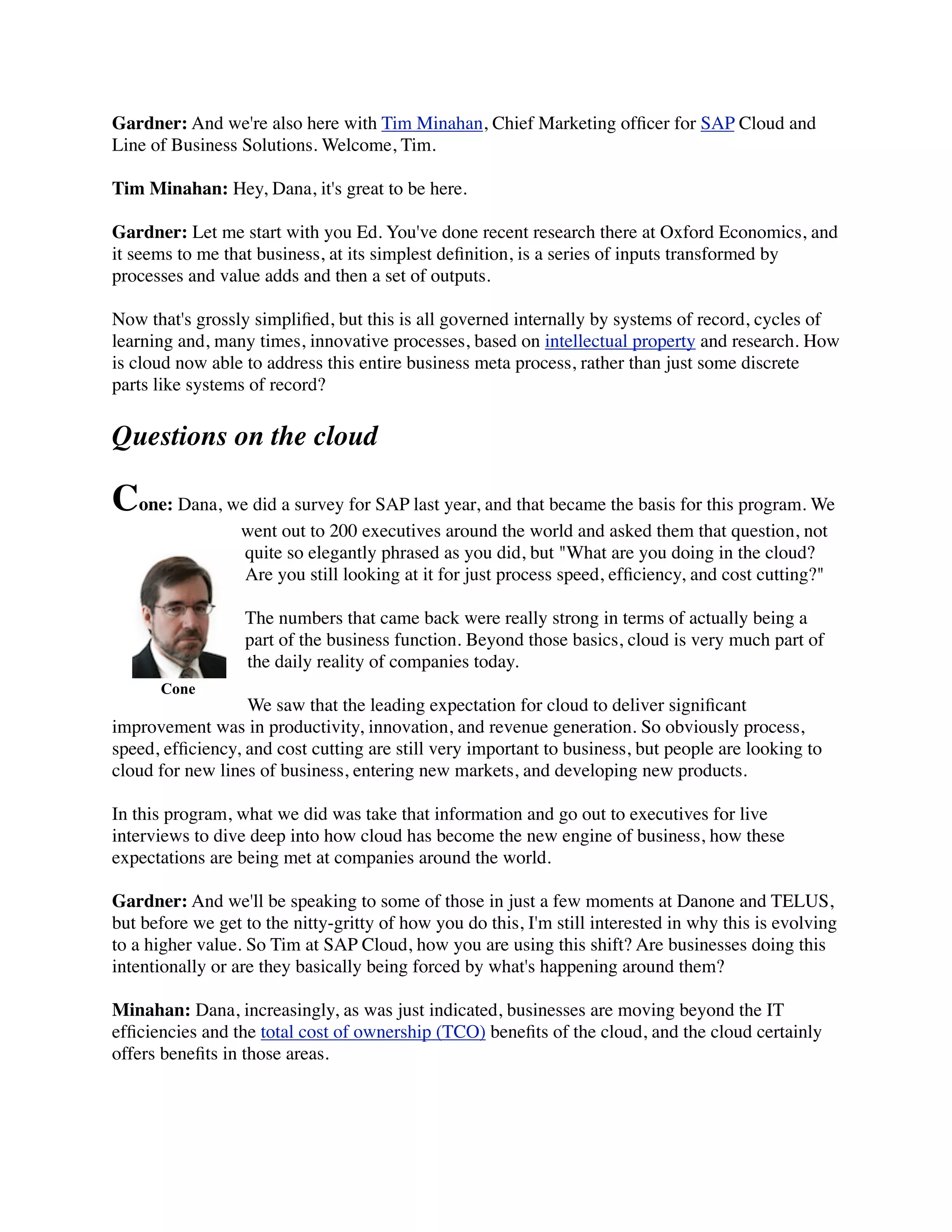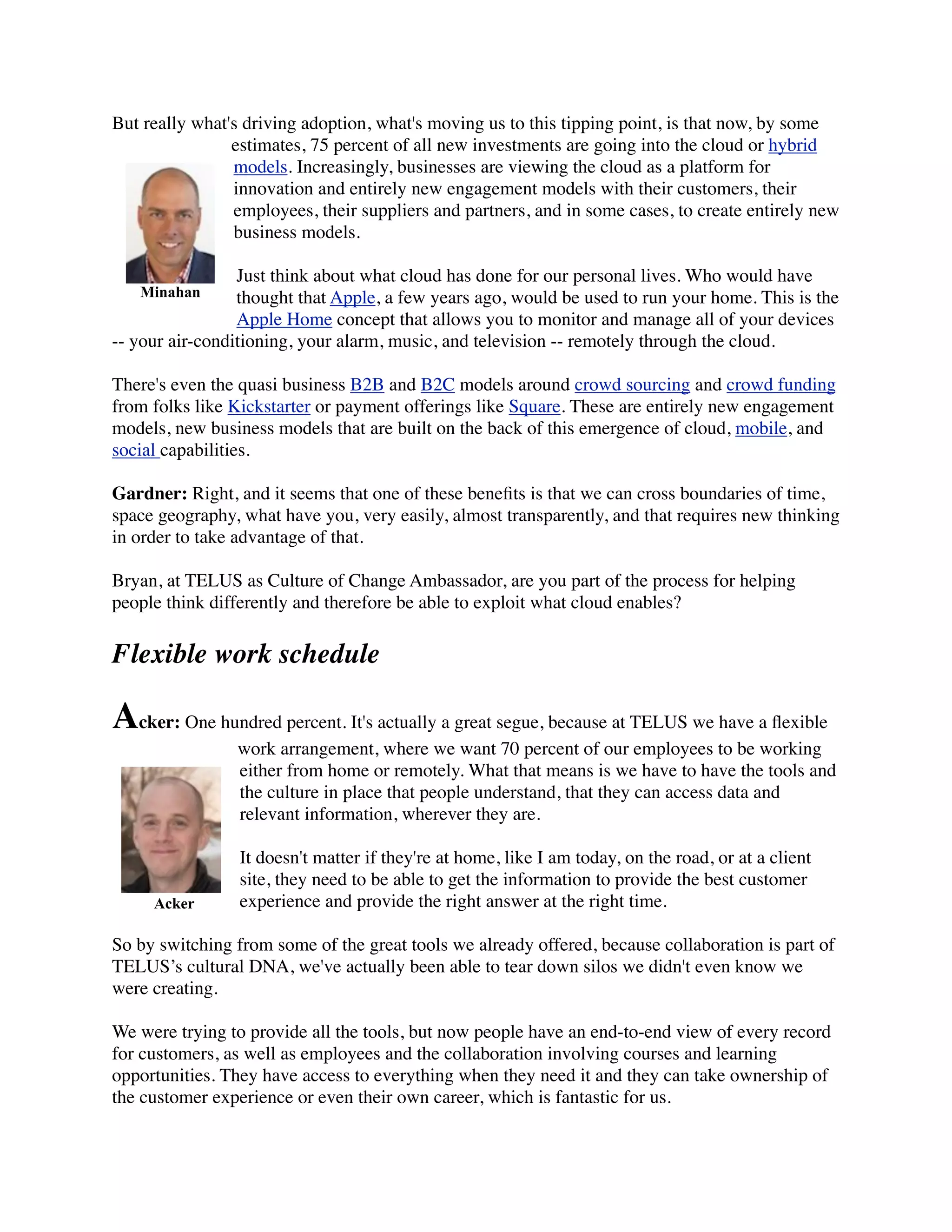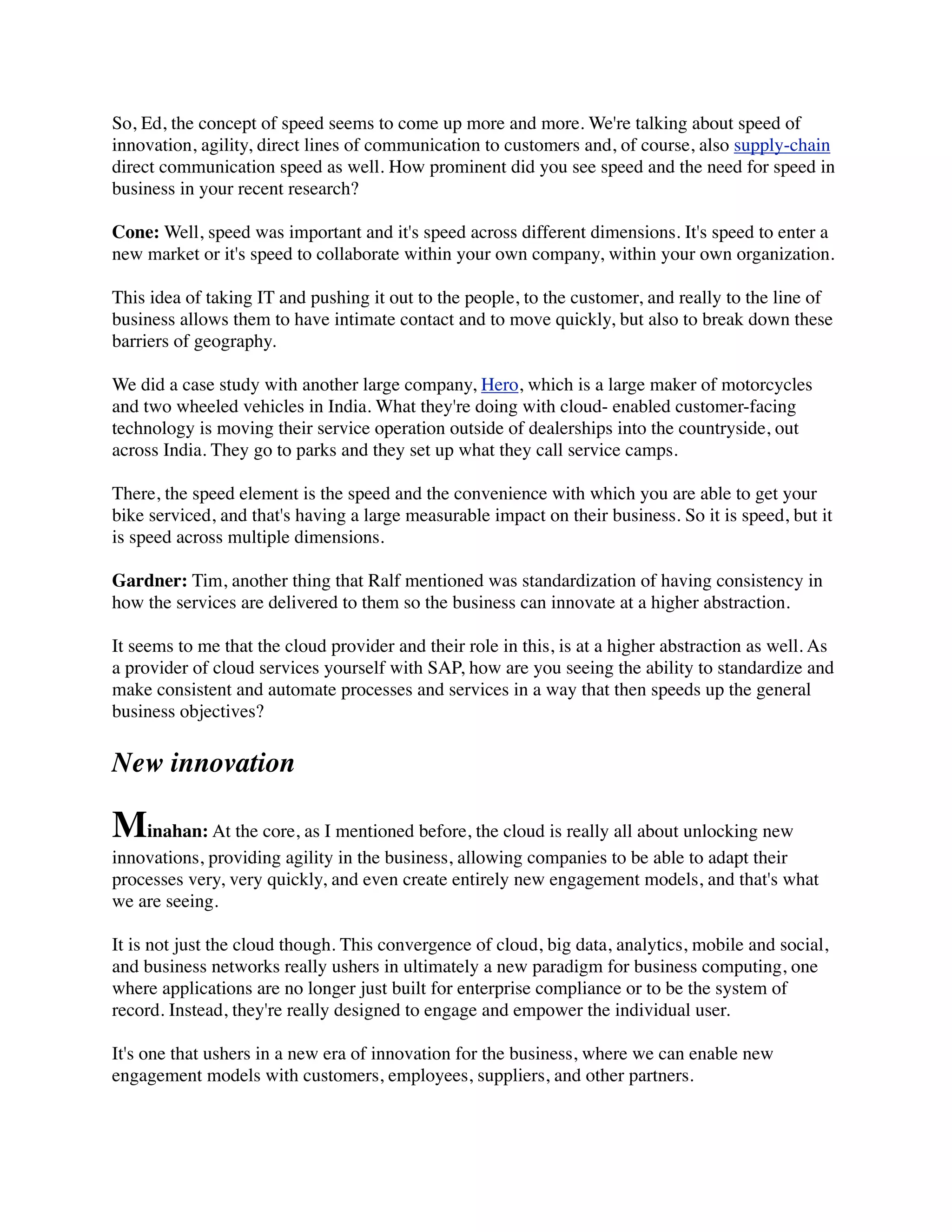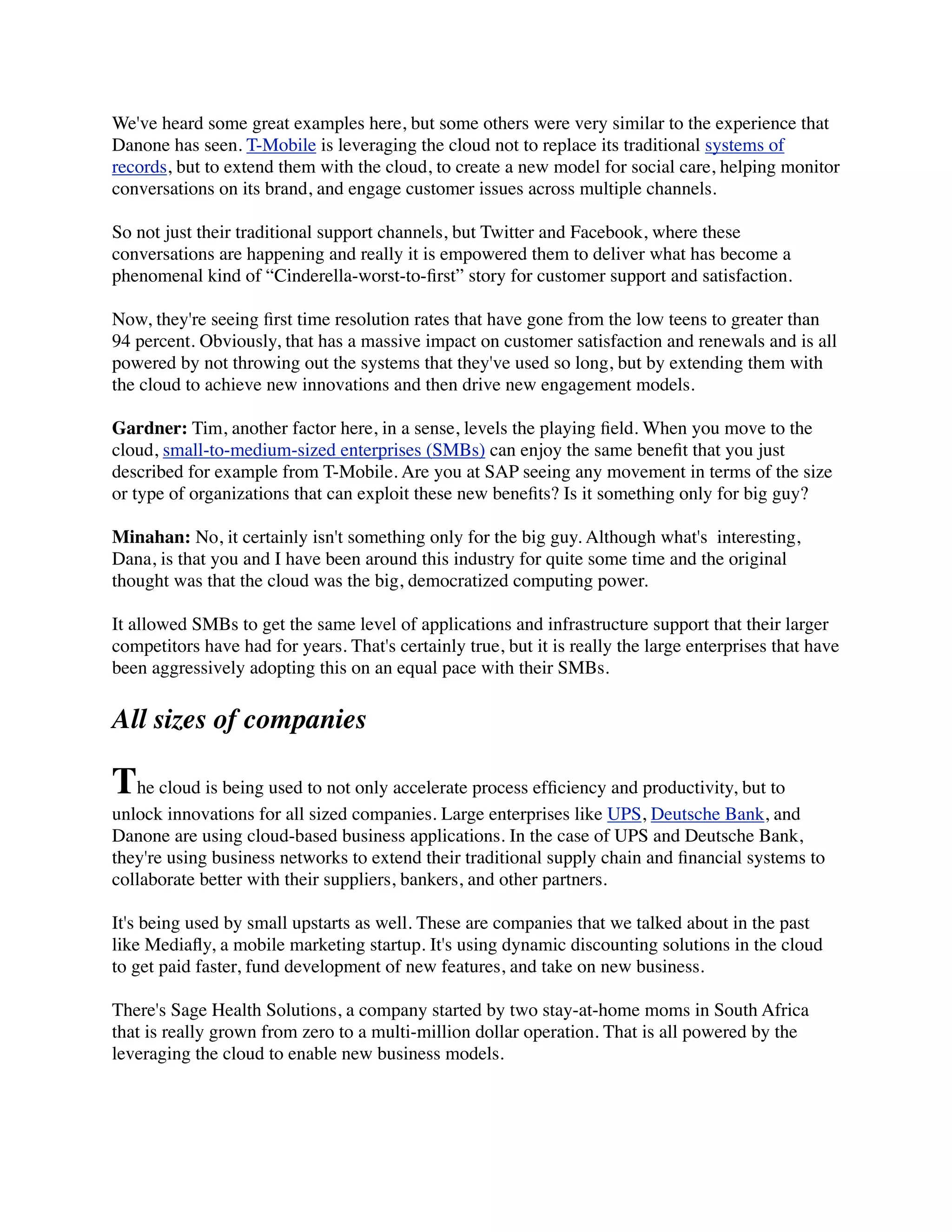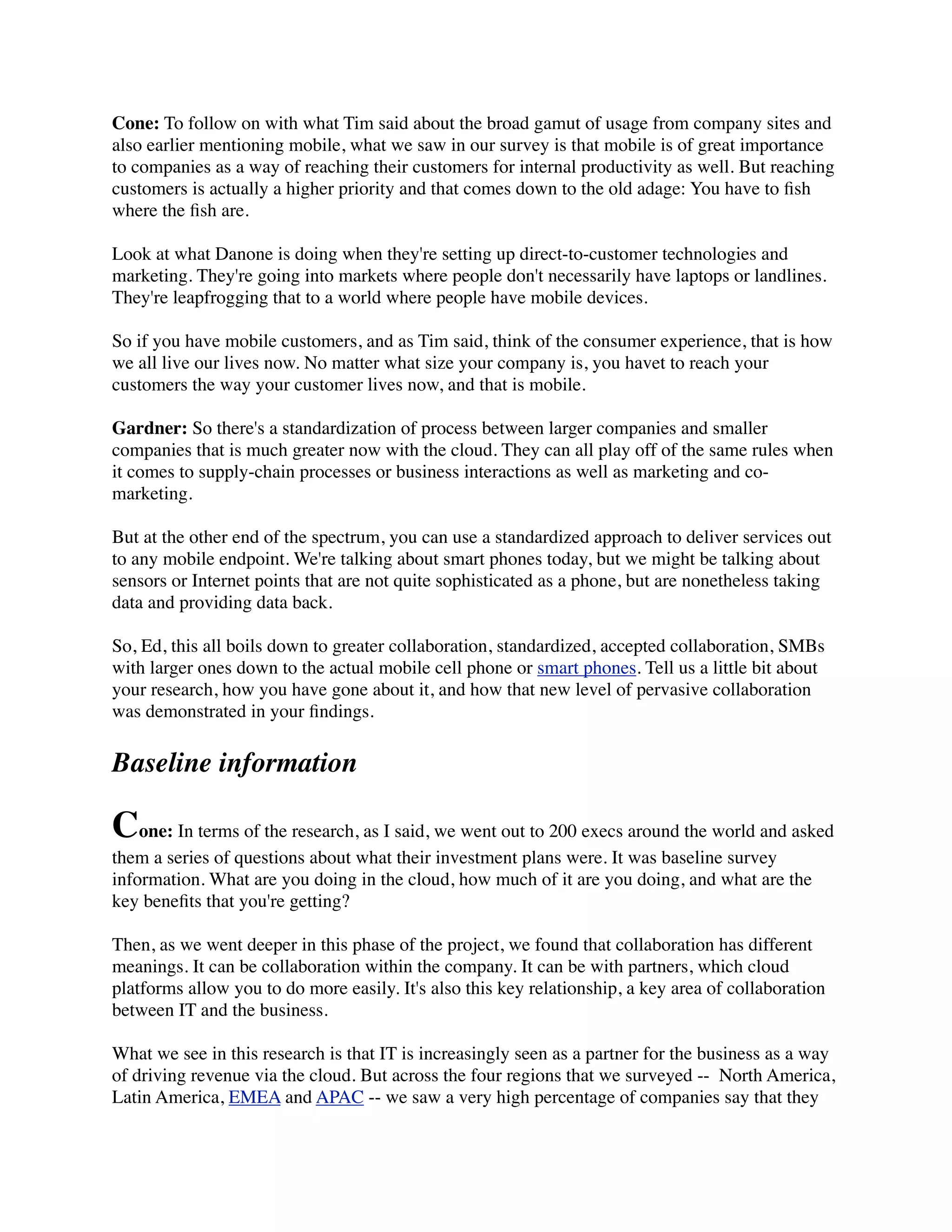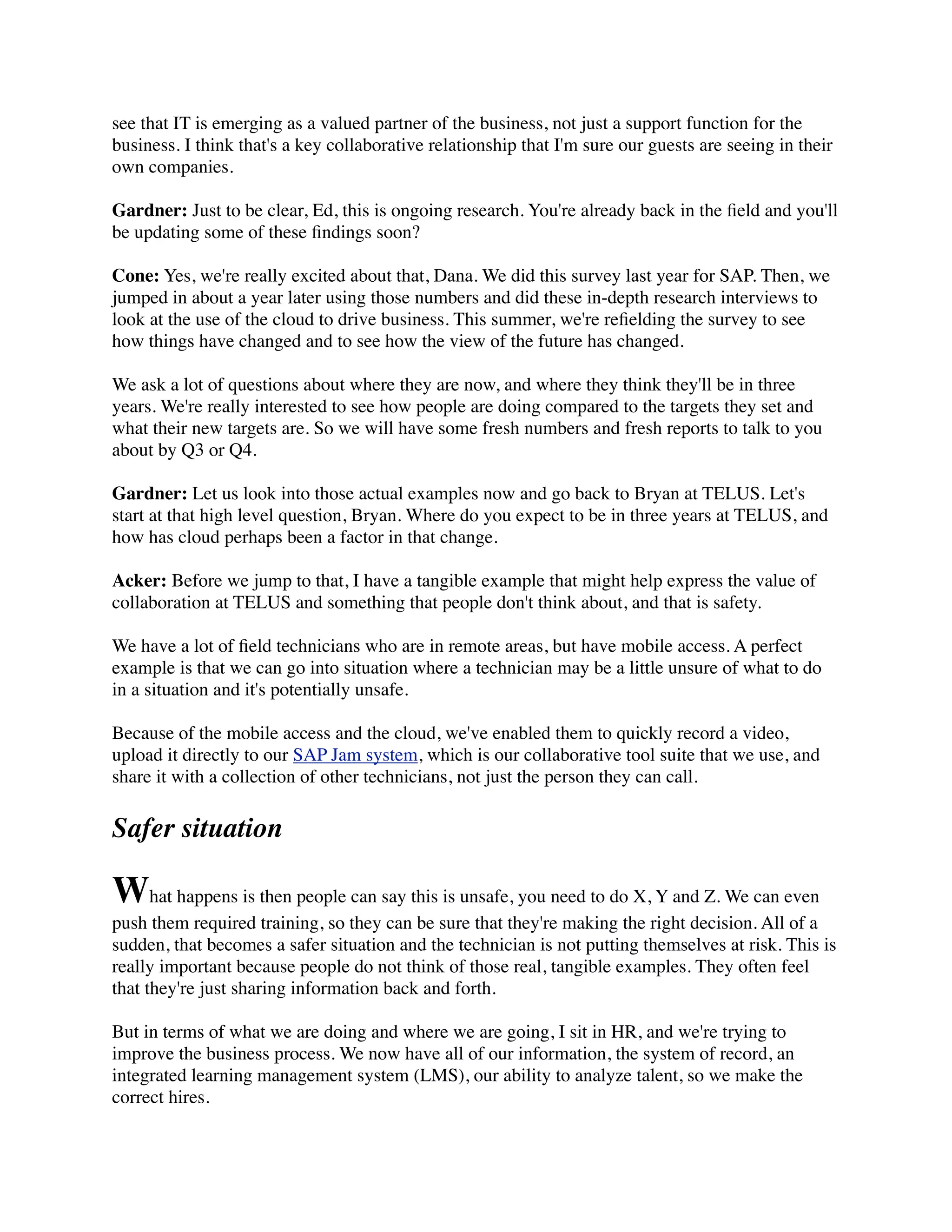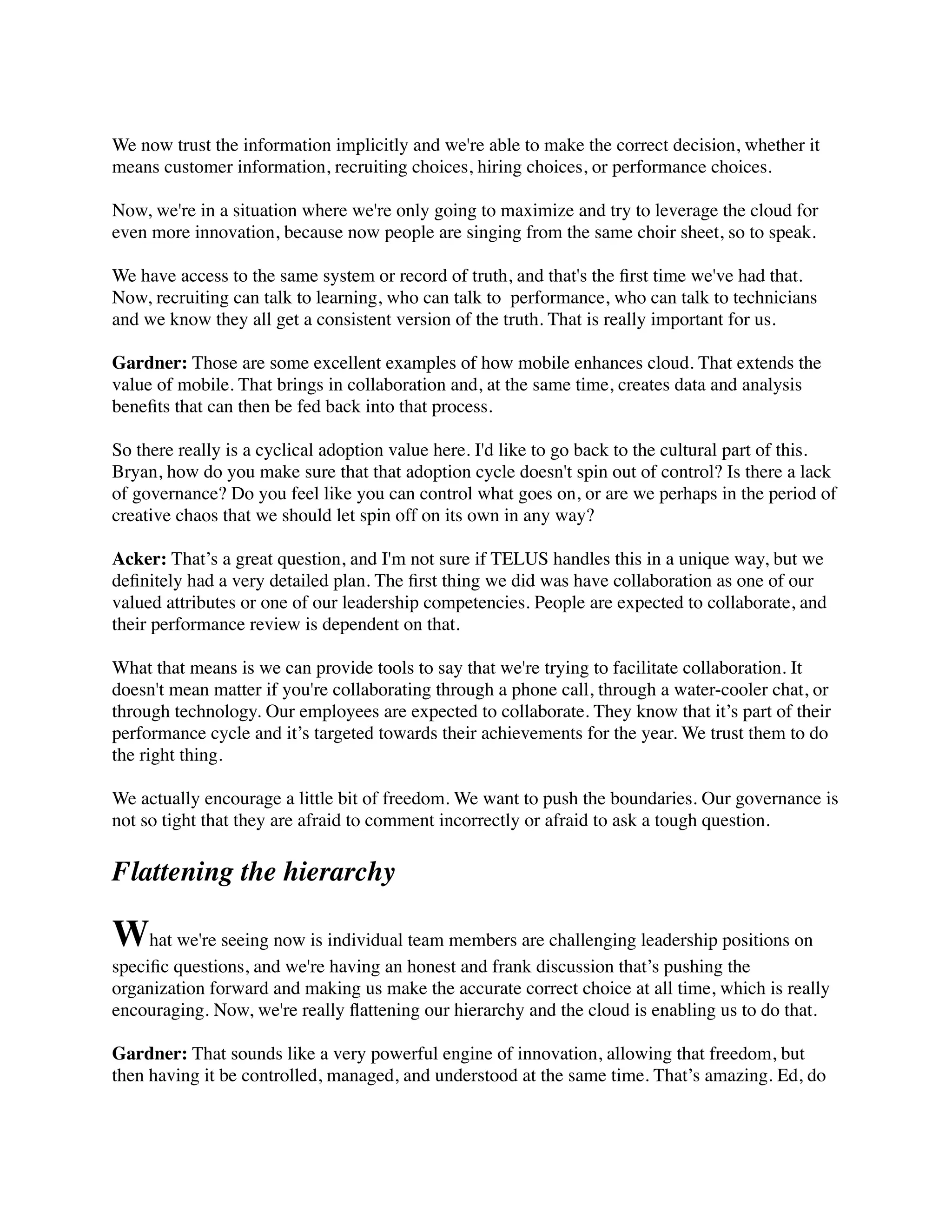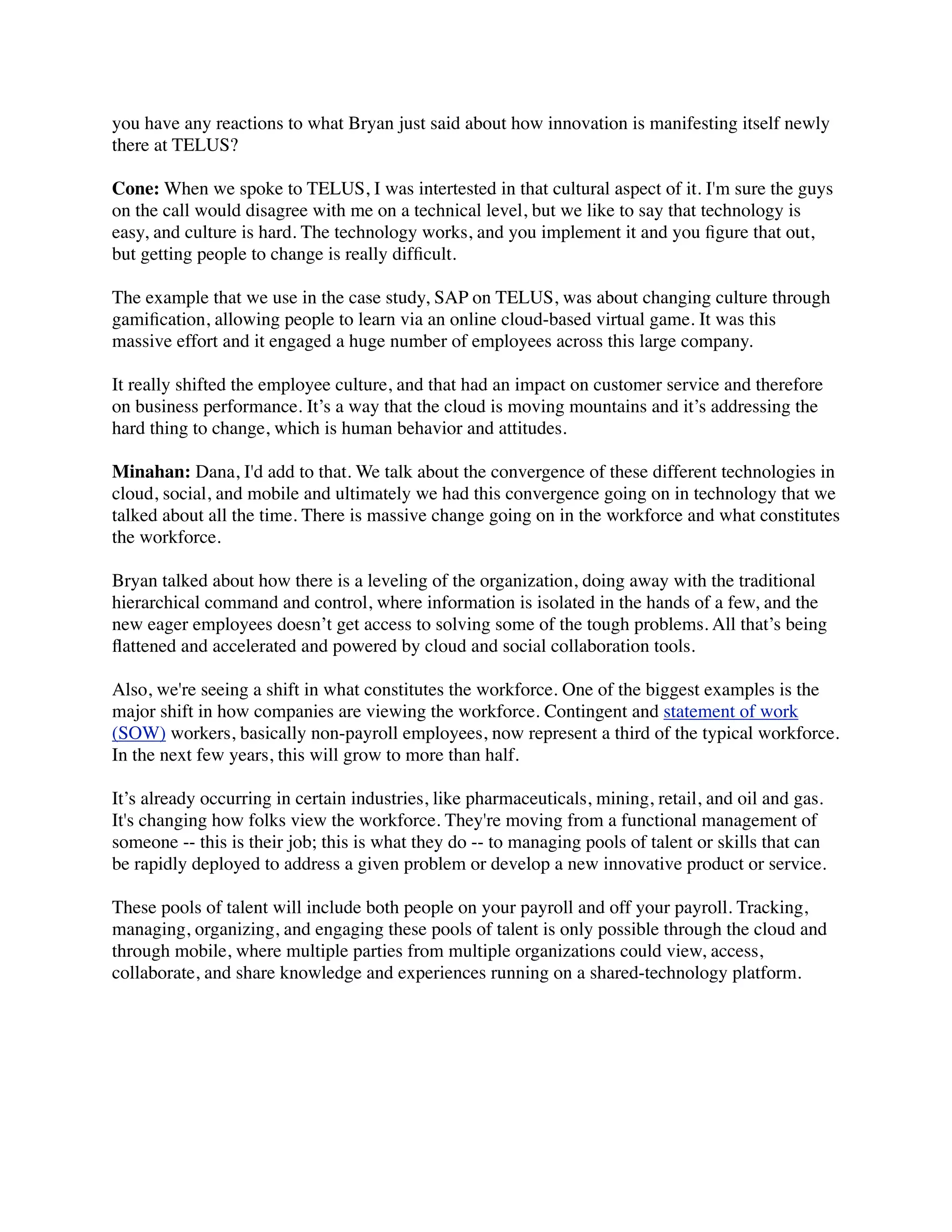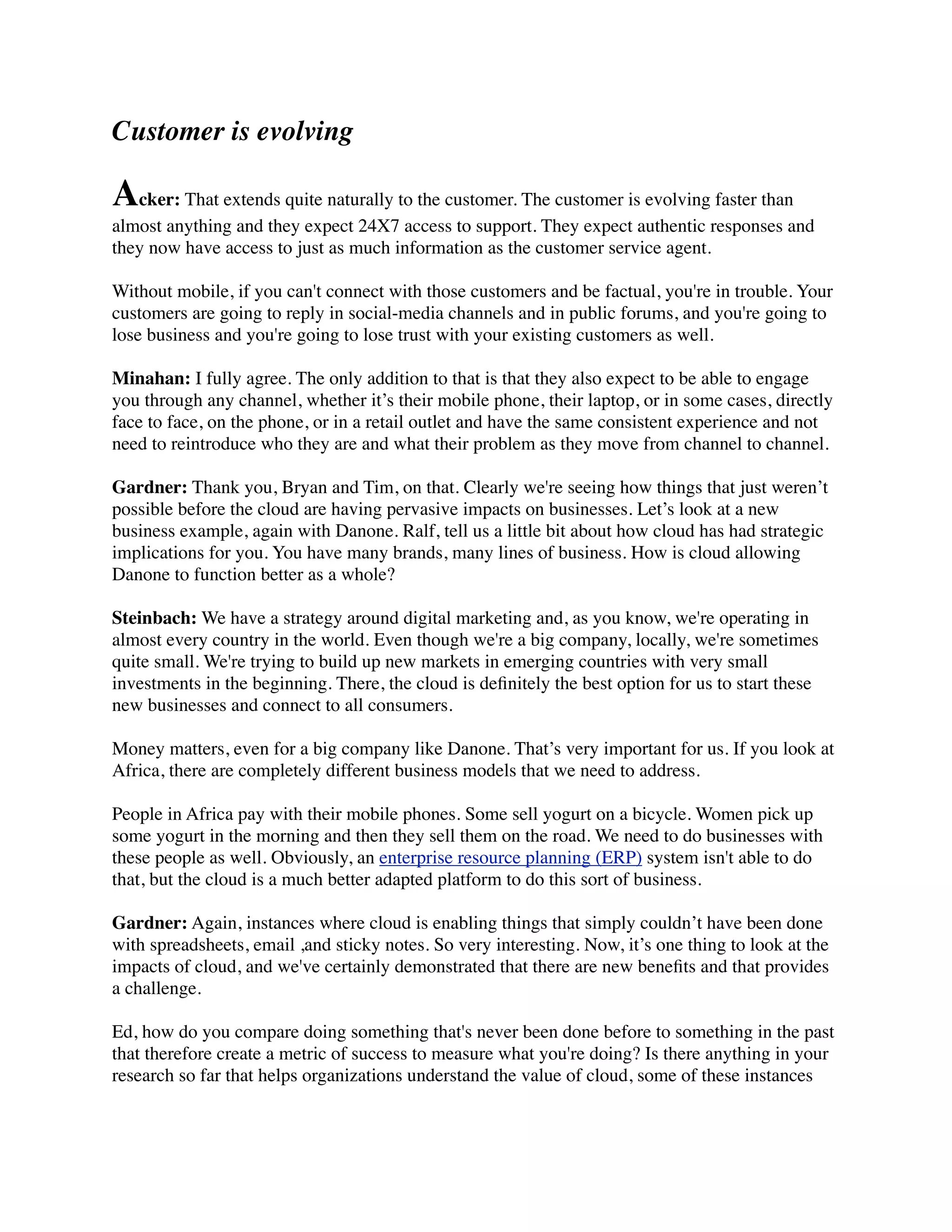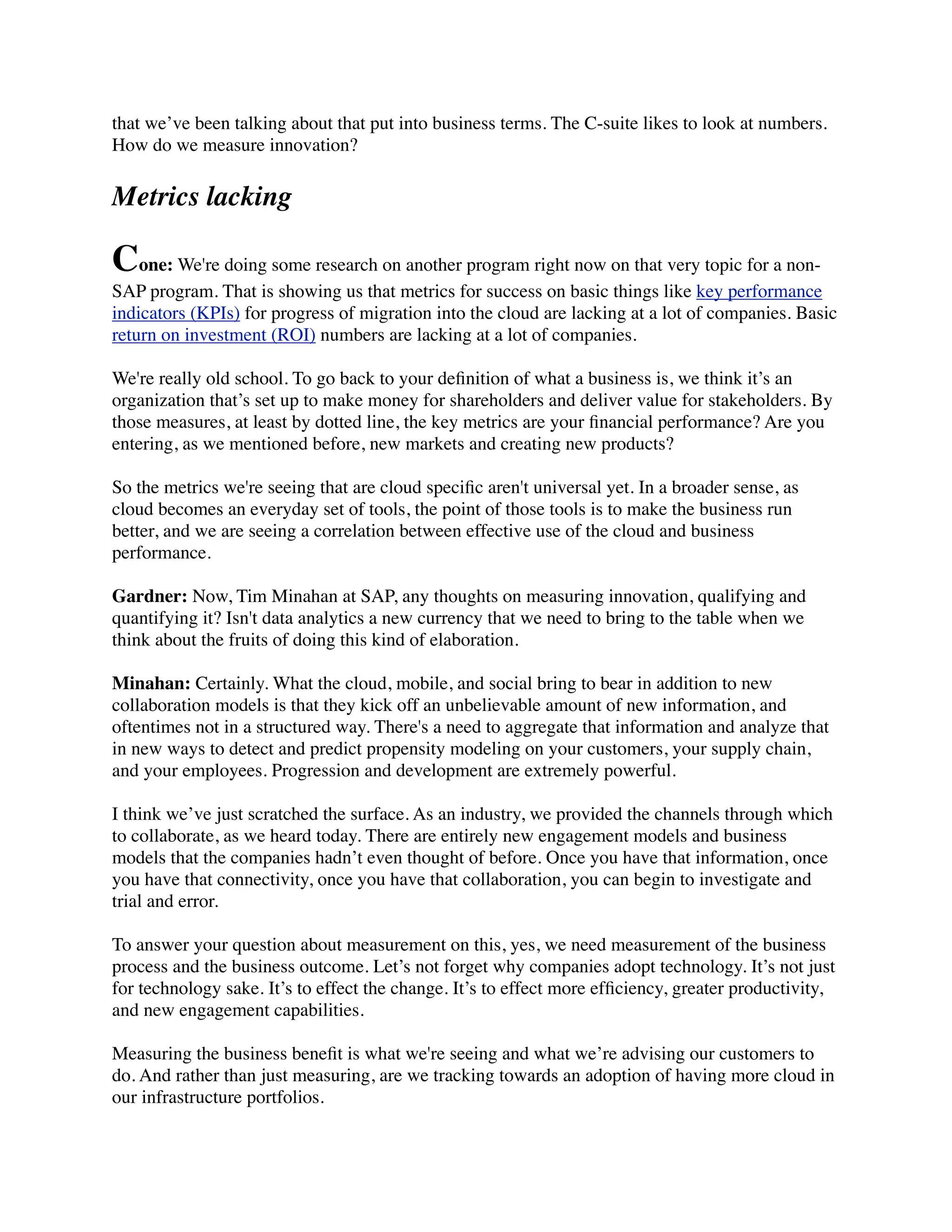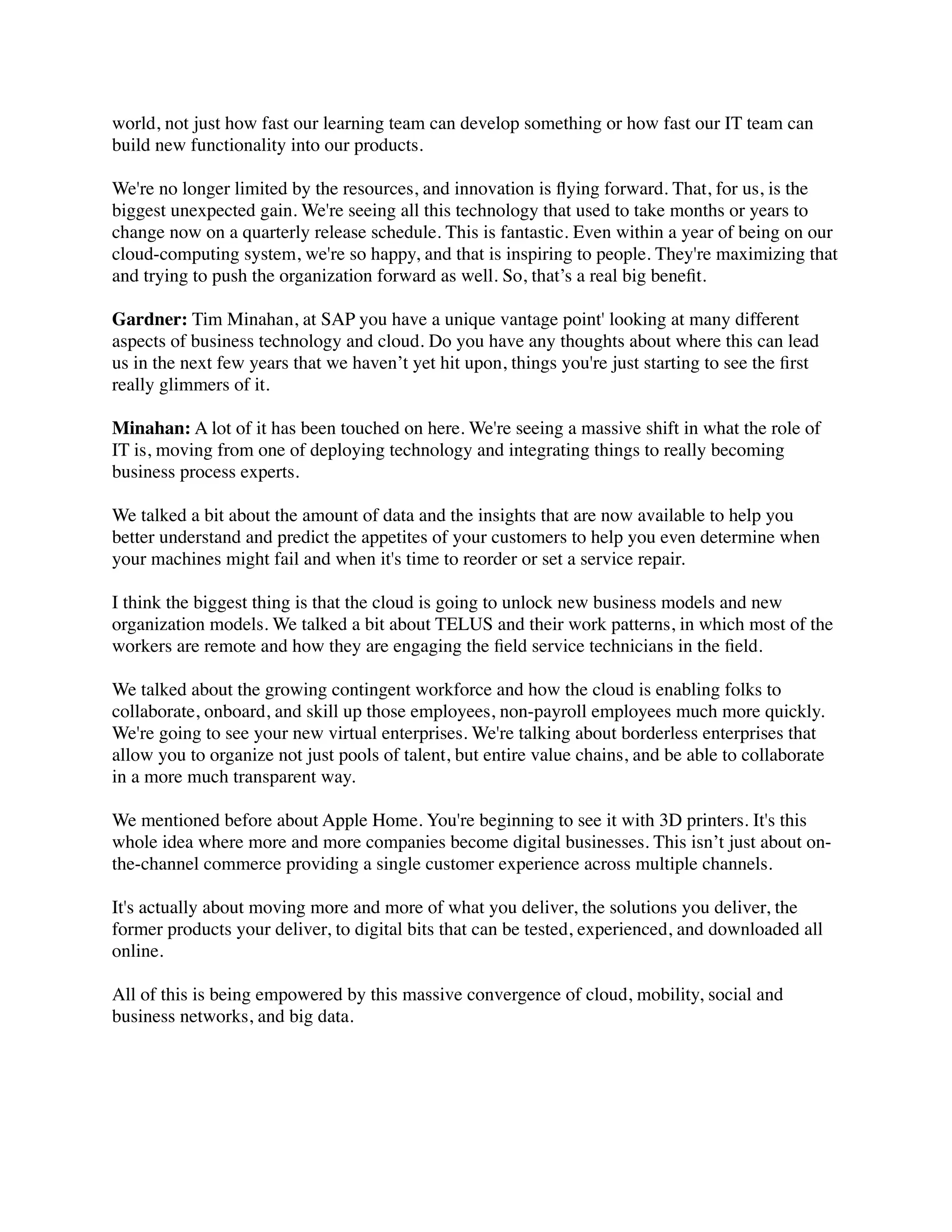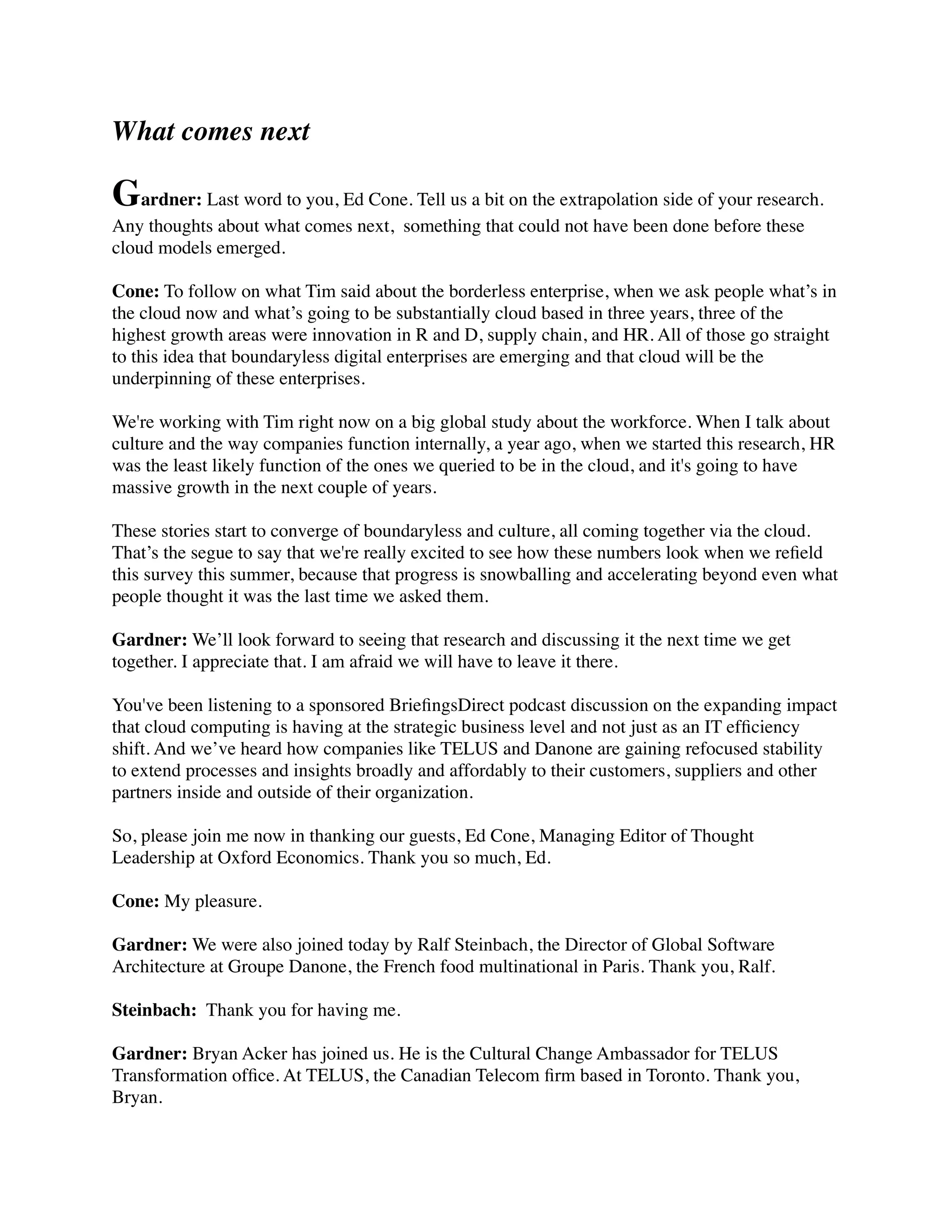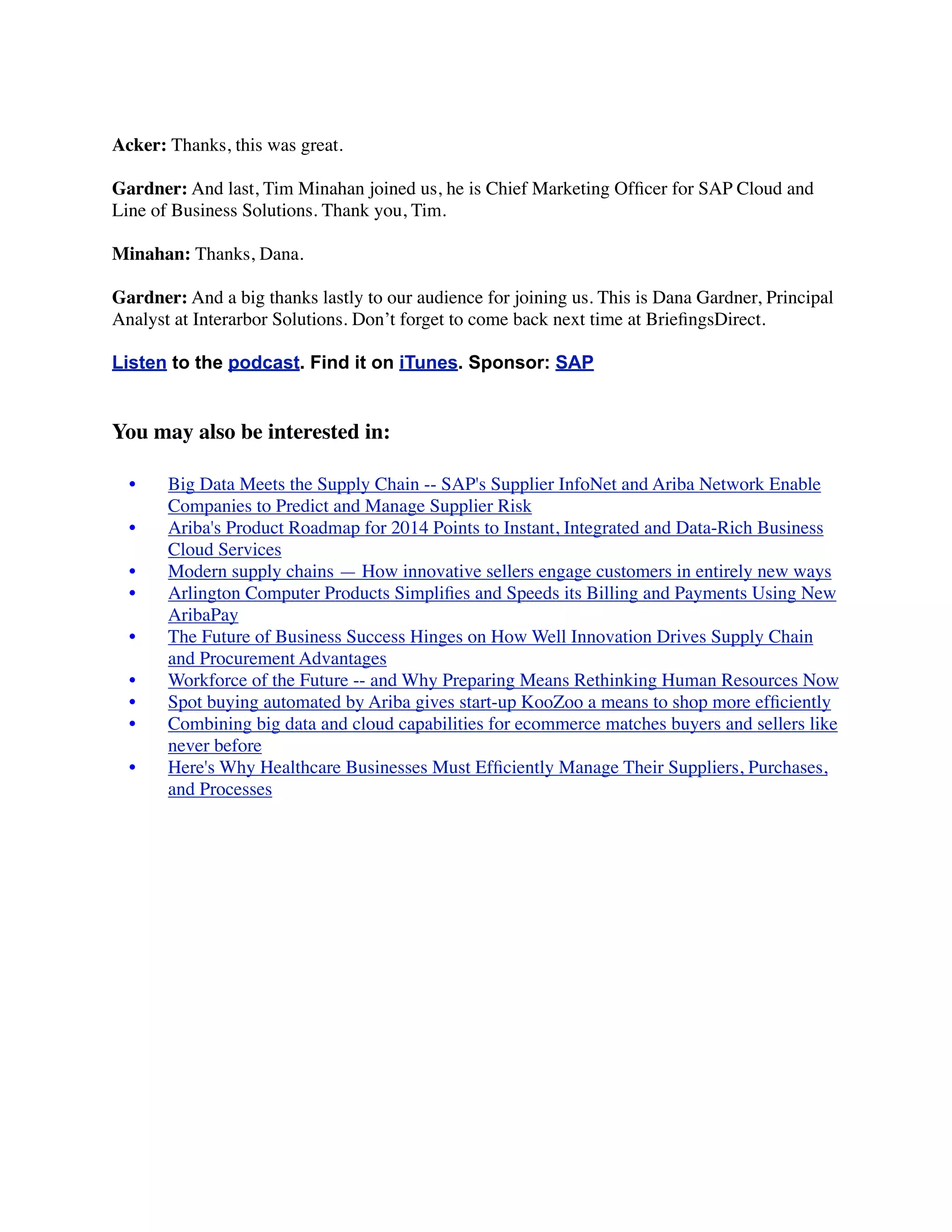The podcast discusses the transformative impact of cloud computing on business innovation, emphasizing that companies are increasingly leveraging cloud technology to drive new business models and engage with customers more effectively. As businesses move beyond cost-efficiency gains, the cloud is seen as a crucial platform for productivity, innovation, and new revenue streams. Expert insights reveal that the cloud facilitates faster market entry, better collaboration, and more flexible marketing strategies across various industries.
